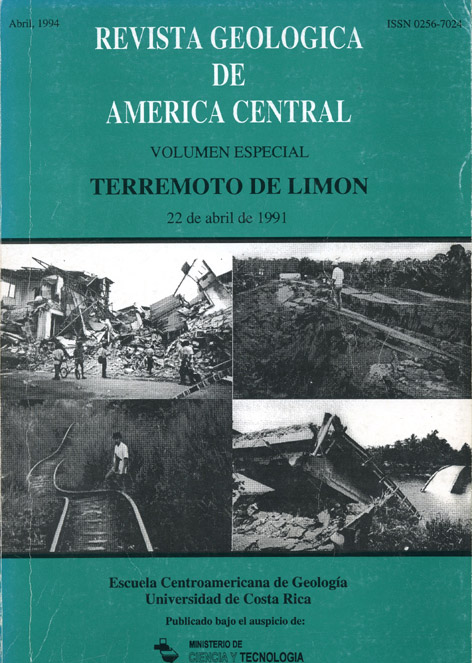Abstract
The April 22, 1991 earthquake caused several damages in the southeastern region of Costa Rica. In this paper a summary of the geologic effects of the seimic event is discussed.
During the seismic event occurred the liquefaction of huge areas composed by non-consolidated Quaternary sediments. The magnitude of the liquefaction was more related to the underground composition than to the distance to the epicenter.
The subsidence that was observed in the Costa Rica Caribbean region, was not a tectonic effect, but it was caused by differential compaction of the soil and non-consolidated alluvial deposits.
The most dramatic effect of the earthquake was the co-seismic uplifting of the shoreline and inland are from Moín, in the north, to Gandoca, in the south. The magnitude of the co-seismic uplifiting range from 0 to 1.85 m. A tsunami occurred after the main seismic event, however, its effect was diminished by the presence of a reef barrier and because the shoreline was already uplifted when was the wave arrived.
Hundreds of landslides were triggered by the earthquake, causing a severe ecological damage to the tropical forest.






